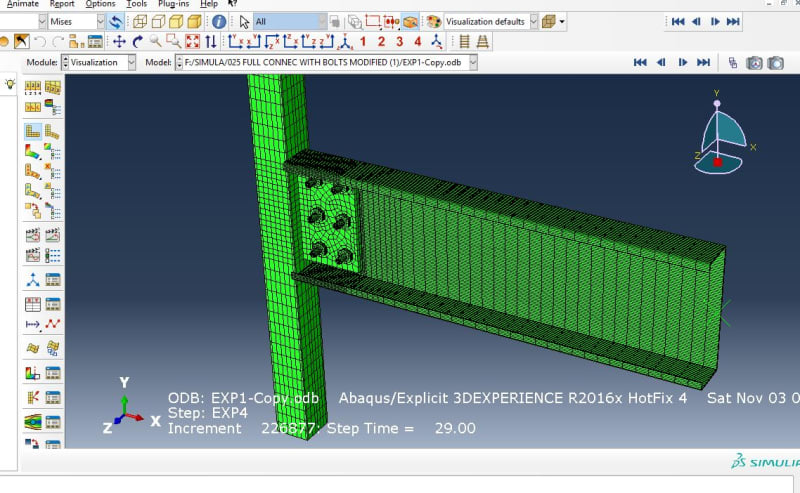No worries, but looking closer at your question you refer to obtaining the rotational stiffness of the connection (moment vs rotation), something I have never done, and do not know how to do exactly. (As for obtaining the total moment somewhere on the cross section, like you say, one can make a free body cut and get the resultant forces and moments)
Normally when I teach, say a connection example, the aim is to obtain the capacity (not the stiffness). So looking at the applied force vs deflections, or moment vs rotation at the point where we apply the force or moment.
For SHS or a CHS, the point of load application is many times on the centreline of the section, thus there is no node there. In Strand7, which is the software I use, one can use a rigid link cluster/spider, or a multi-point link cluster, to obtain a node on the centre line where we can apply the load onto. Very often these two are what is called RBE constraints (Nastran name), and are more specifically RBE2 and RBE3 respectively in Nastran (often used like explained here for remote load application). These two translate as kinematic (RBE2/rigid link) and distributed (RBE3/multi-point) coupling in Abaqus. For more information see the manual.
Finally last time I used explicit time integration (used to solve dynamic equations), was over 10 years ago and for research purposes so I do not have much practical experience. Of course I remember that the stable time increment since it is a conditional stable scheme can be very small (~1E-7s to ~ 1E-5 s, assuimg 1 to 100 mm typical elements size), due to the high speed of the fastest wave in steel (~5000 m/s for the longitudinal wave in steel) thus many time steps are needed to resolve long quasi static runs, even perhaps with mass scaling which I never used.
Now what you want to use in terms of solver it is up to you not me so just choose what you want. For me though since there is not an explicit solver in Strand7 (an implicit exists, and is used in Strand7 say for nonlinear structural dynamics, not for static problems), when I do say the connection example mentioned above (static problem), I will use of course the nonlinear static solver (including all nonlinearities), which uses standard NR iterations to solve a static NL problem (thus no inertia and mass matrix, so only K*u=F is solved). Since convergence can be difficult when this structure collapses and softens the arc length (called Riks in abaqus) sub stepping scheme is used to aid convergence, helping to obtain a solution in Strand7 (in the implicit schemes arc length does not exist, hence the sensible choice of using a nonlinear static solver to solve a static problem with the aid of arc length).


